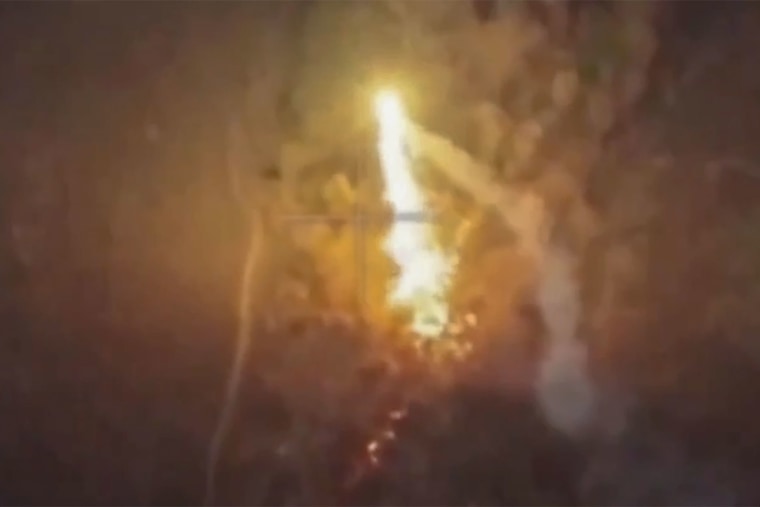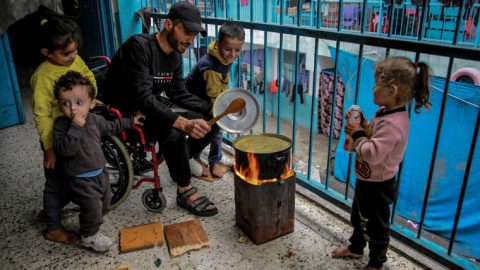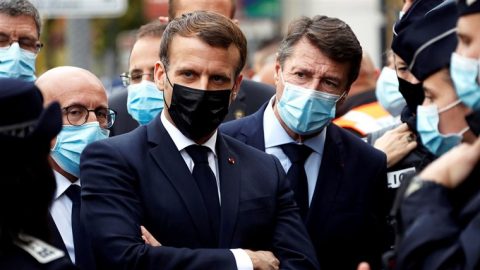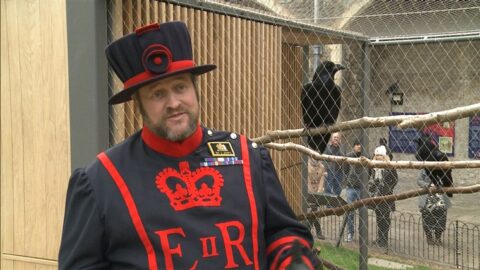Russia’s invasion of Ukraine has long conjured images of war that Europe thought had been consigned to the history books. And now Kyiv appears to have an eye-catching new weapon that adds a medieval twist to its defensive arsenal.
Ukraine’s forces have shared videos in the past week showing the use of drones that spew a fiery substance onto troops and terrain below, a possible boost in their bid to press forward with an assault on Russian territory while defending against Moscow’s relentless efforts to seize a strategic chunk of Ukraine’s east.
The “dragon drones,” as they have been dubbed by some military analysts, appear to be a recent innovation in the field of drone warfare, which has played an increasingly important role in the two-and-a-half-year war.
In videos that have emerged on social media from both official and unofficial sources in Ukraine since last week, the drones look like yellow balls of fire with trailing tails as they fly low over the ubiquitous strips of forest that dot large swaths of Ukrainian landscape and help provide cover for infantry and equipment.
Several Ukrainian military units have shared videos of these drones in action in recent days.
The 60th Separate Mechanized Brigade released a video last week calling the drones “the wings of vengeance” and saying that they can burn enemy positions with “an accuracy that no other weapon can achieve.” A spokesperson for the brigade confirmed the use of drones to NBC News.
Ukraine’s 108th separate mountain assault battalion shared another video over the weekend, saying that its drone pilots had flown the “dragon drones” over Russian positions.
On Monday, President Volodymyr Zelenskyy’s chief of staff, Andriy Yermak, also posted a video that appears to show the drone at work at night with a caption: “A real dragon.”
None of the videos said when or where the drones were used. It’s also unclear if they are in fact showing the drones in combat or in testing.
NBC News was not able to independently verify or geolocate the videos due to the lack of distinct geographical characteristics in the terrain.
Ukraine’s defense ministry would not comment on the use of the drones. The 60th Separate Mechanized Brigade did confirm it was using them.
“Given the entrenched character of the conflict, the deployment of these weapons is likely an indication of just how desperate and brutal the fighting in Ukraine has become,” James Patton Rogers, a drone expert and executive director of the Cornell Brooks School Tech Policy Institute in New York, told NBC News.

Drone warfare has been crucial for both sides, and not only on the immediate front lines, but to strike targets deep inside each other’s territory and in the Black Sea.
Judging from the videos appearing online, Ukraine’s innovation appears to work by pouring an incendiary substance, possibly thermite, on Russian positions, said Emil Kastehelmi, a military analyst with the Finland-based Black Bird Group, which analyzes open source intelligence.
Although it’s uncertain exactly what the Ukrainian army is using, thermite is an incendiary mixture that burns at very high temperatures, Kastehelmi said, and can lead to severe burns and damage to equipment on the ground.
It also burns the vegetation used as cover by Russian troops, exposing their positions and making drone reconnaissance and strike missions more effective for the Ukrainians, Kastehelmi said.
He said his group’s experts and other open source intelligence analysts have been able to geolocate the “dragon drone” videos to Ukraine’s southern Zaporizhzhia region, as well as Donetsk in the east and Kharkiv in the north. They also include at least one instance of the fiery drones being used in Russia’s border Kursk region, which Ukrainian troops invaded last month, he said.
The geolocations suggest the drones are being used in combat, Kastehelmi said. “They are being used over the Russian front lines,” he added. “So they are definitely in use. It is not just testing anymore.”
And one of their main advantages is likely to be psychological, Rogers said.
“We need only think of the German Zepplin’s dropping thermite bombs on British cities during World War I as a pertinent example,” he added. “In this case, the intention is likely similar, to drive Russian troops back through fear and fire.”
Experts said it’s difficult to assess at this point how effective these drones really are and how widespread their use is, but they are unlikely to replace more conventional drones or become a game-changing weapon for Ukraine.
A lot will also depend on how the Russians will respond.
“It seems to only be being used by the Armed Forces of Ukraine so far, but if it is judged highly effective, the basic technology behind them would be extremely easy to copy and rapidly deploy by Russian forces too,” said Justin Bronk, a senior research fellow specializing in air power and technology at the Royal United Services Institute, a British military think tank.
Thermite is used to weld railway rails together and a wide range of other industrial metal-joining applications, Bronk added, so it is an easily available and well understood incendiary material.
And if Moscow sees a use for these weapons, it is possible that the “dragons” could add a terrifying new layer of destruction to an already brutal war, Rogers said.
The Russian defense ministry has not commented on Ukraine’s deployment of the “dragon drones,” but some influential Russian military bloggers noted the videos showing their use last week, calling it a “dangerous and unpleasant” weapon.









Recent Comments